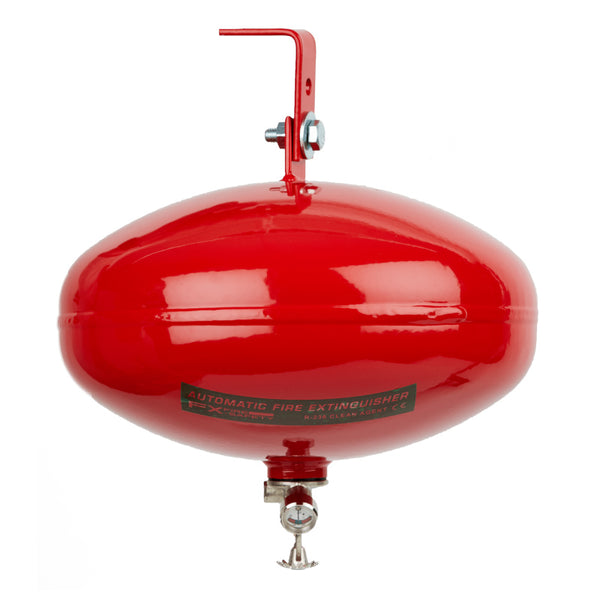As a follow on to my last post I must put the record completely straight regarding Halon replacement fire extinguishers. For general use CO2 is the product of choice as it is affordable and widely available.
CO2 is not a catch all solution as it is only effective on Class B (flammable liquids) and electrical fires. If used to flood an enclosed room the gas could also quickly incapacitate and possibly kill any occupants.
There was a case earlier this year where two guys in the US discharged a couple of CO2’s at each other as a prank in an enclosed room and were rendered senseless in minutes – not that they had much sense in the first place by the sound of it. Luckily no fatalities.
The Halon alternative is a product called FE-36 developed by Dupont. In use it is also referred to as a Clean Agent Fire Extinguisher and we supply FE-36 as fixed automatic extinguishers. Automatic extinguishers work in the same way as most automatic fire sprinkler heads as they have a heat sensitive liquid filled glass bulb that breaks at a fixed temperature – around 79⁰C for FE-36 – which opens the valve allowing discharge. Clever little devices these bulbs. They have a small bubble of air inside. As the liquid and the air heats up they expand building pressure inside the bulb until it shatters. You can get bulbs that operate at different temperatures.
The FE-36 formulation extinguishers discharge a stream of gas and liquid droplets that flood the area and through a combination of chemical reaction, heat absorption and air expulsion suppress and extinguish the fire. Like CO2, FE-36 becomes a gas at very low temperatures, -1.4⁰C or 38⁰F in old money and has the important property that it leaves no residue that could harm sensitive electronics or valuable contents. The automatic feature also means you have protection round the clock.
FE-36 is effective on liquid fuel fires (Class B) and Gases (Class C) and is safe to use on electrical equipment. It is a direct replacement for Halon in terms fire fighting properties without the Ozone depletion issue. Applications include medical facilities – like MRI scanners, plant & machinery, computer server rooms, archives, museums, telecom switch rooms, clean rooms, marine craft, particularly in boat engine compartments and any similar installations involving enclosed areas housing delicate and or expensive contents.
Just a note of caution in that when discharged into a fire under certain conditions FE-36 can produce hydrogen fluoride (HF). Whilst this gas is usually presented in small quantities it is advisable to make sure that after a fire the area is well ventilated before allowing staff to return. Really this advice applies to any fire in an enclosed space as fires produce any number of toxic gases depending on what has been burning.
Tony




